Have you ever thought about alternatives to air conditioning? Some great options can help keep you cool while lowering your electricity bill and saving money in the process!
Exploring Alternatives to Air Conditioning: Beyond Traditional Cooling Systems
In today’s rapidly changing climate, staying cool is paramount. As the global temperature continues to rise due to climate change, the demand for efficient cooling methods increases. While many have leaned heavily on the traditional air conditioning system like the central air conditioning or the window air conditioner, there’s been a significant shift towards exploring alternatives to air conditioning. These alternatives aim to provide the same comfort, but with increased energy efficiency and reduced environmental impact.
Traditional Cooling: How Do They Stack Up?
Central Air Conditioning (Central Air): Predominantly found in many homes, this system operates using an air conditioning unit connected to an HVAC system. Although effective, they aren’t always the most energy-efficient, leading many to consider alternatives to air conditioning.
Window Air Conditioners: These AC units fit into a window frame and are adept at cooling individual rooms. However, when thinking of alternatives to air conditioning for larger spaces, these might not be the first choice.
Portable Air Conditioners: These movable units are similar to window air conditioners but are not fixed to one place. They serve as temporary alternatives to air conditioning in specific spaces.
Alternatives to Air Conditioning: Evaporative Coolers
One of the oldest alternatives to air conditioning is the evaporative cooler. Often dubbed as a swamp cooler or an air cooler, it doesn’t use refrigerants. Instead, it operates on the principle of evaporative cooling: drawing in warm air, moistening it, and then releasing cooler air into the environment. For those actively seeking alternatives to air conditioning that are energy-conscious, these coolers can be a viable option.
Heat Pumps: An Efficient Alternative
Heat pumps, serving as effective alternatives to air conditioning, don’t create cold or warm air but transfer heat. In warm months, it takes the interior warmth and releases it outdoors and reverses the process in colder months.
The Power of Passive Cooling
Passive cooling, another in the list of alternatives to air conditioning, leans on architectural techniques to maintain indoor temperatures. It focuses on improving air circulation, using proper shading, and encouraging the flow of fresh air. Its non-reliance on devices makes it energy-efficient and an attractive alternative.
Energy Efficiency: The Need of the Hour
In the era of climate change, energy efficiency stands front and center. Traditional methods, like the central air conditioner, can consume more energy than some of the newer alternatives to air conditioning. An evaporative cooler, for instance, can use up to 75% less electricity than standard AC units. Then, swamp coolers are best suited for dry climates, ensuring no energy is wasted on battling humidity.
In the end, with the extreme heat challenges posed by climate change, the balance between comfort and energy consumption is paramount. This balance makes the exploration and adaptation of alternatives to air conditioning not just a choice but a necessity.
As the demand for efficient cooling methods grows, the quest for effective alternatives to air conditioning becomes ever more crucial. From age-old techniques like swamp coolers to modern heat pumps and passive cooling strategies, the range of options is broadening. With the continuous threat of climate change, it’s evident that alternatives to air conditioning are not just the future but the present need.
10 Best Alternatives to Air Conditioning
Check out these 10 alternatives to get you started.
1. Solar Cooling
Solar cooling is a great alternative to keep cool your home cool on a hot day. This method is inexpensive to cool your home; the best part is that you’ll be using the sun’s energy!
There are a few ways that solar cooling works. One way to do this is by using an absorption chiller, which uses heat to create a cool effect almost all the time. This is the same way of cooling as a refrigerator, except that it does not need electricity or a compressor.
Another way is by adopting the same method of cooling as the “Ice Bear,” by using ice as a means of cooling.
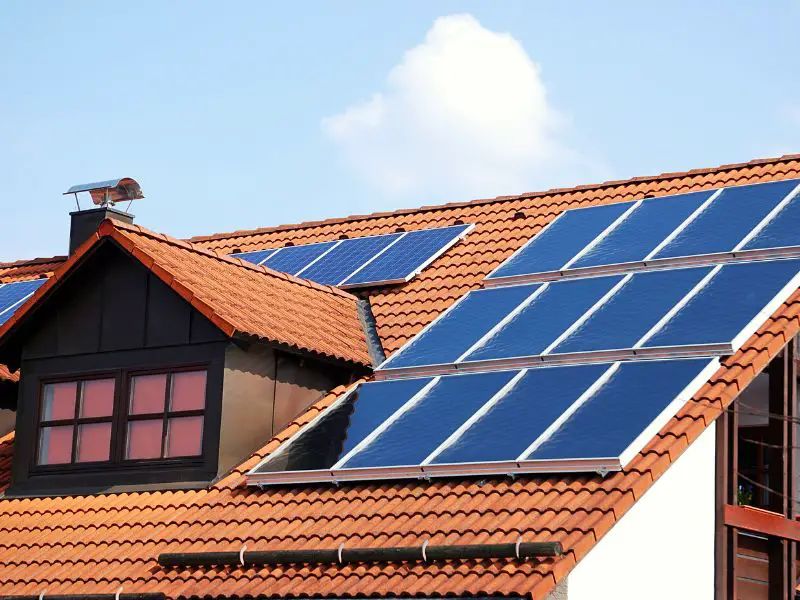
Related: Solar Energy, Is It Safe to Walk On Solar Panels? & Top Sustainable Technologies
2. Attic Fan
An attic fan, a somewhat more straightforward form of a swamp cooler, eliminates humidity limits and works best in locations or on days when the temperature isn’t too hot outdoors.
It simply circulates air giving a steady breeze and pushing stuffy, warmer air out.
This fan draws cool air inside the home and discharges hot, stuffy air through the attic vents.
Pros: An attic fan is simple to use and install. This is a very inexpensive method of cooling your home.
Cons: If your attic isn’t clean, you may pull dust (and humidity) into the home. In addition, while it can be used in summer and warm weather, it will not work well in fall and winter.

3. Room Fans
A room fan is an excellent example of Alternatives to Air Conditioning. As the name suggests, a room fan is designed to cool a single room. It’s also significantly more affordable than a whole-house air conditioning unit.
In the realm of Alternatives to Air Conditioning, room fans are also employed for drying clothes and as a backup cooling system when other cooling methods fail.
A distinct feature of these fans is that they don’t operate like ceiling fans. They are generally used in smaller rooms and are designed to be positioned in a specific location in the room where cooling is most needed.
Pros: Room fans are cheap and easy to use. They only need to work when called upon, can be placed wherever required, and can cool down part of the house.
Cons: This may be an inexpensive alternative compared to the other cooling methods, but it might not work well for those who wish to cool multiple rooms at once.

4. Natural Air Circulation
Opening windows on different sides of your house may boost air circulation and lower the temperature.
This permits air to enter the room through one window and exit through the other, resulting in a draught. The free flow of air from inside to outside means there’s no warm air building up.
You can also open the windows at night if it is safe. Because the temperature is lower at night, this may give excellent results.
Pros: You get the benefit of fresh air without using a whole-house air conditioning unit.
Cons: You need to keep an eye on the weather and ensure that the windows are shut when it rains. Also, opening windows at night can let mosquitoes in, so you should be prepared for that.
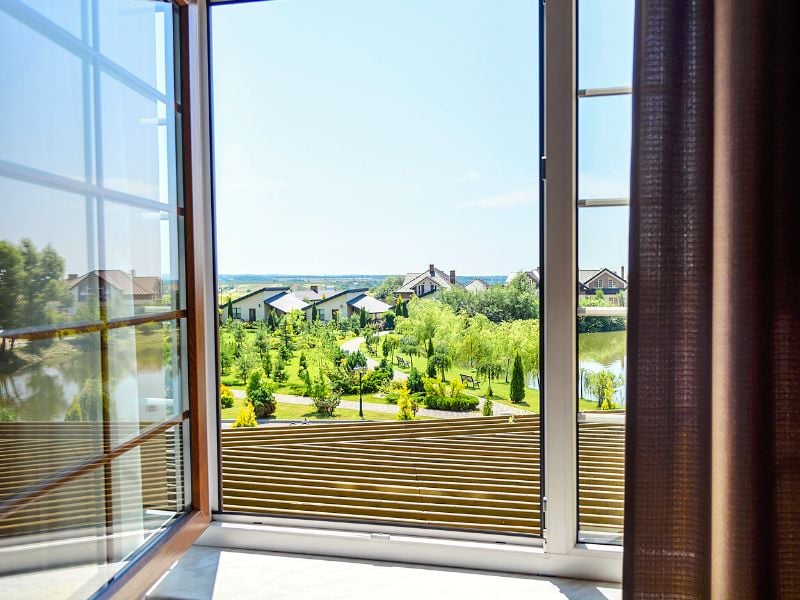
5. Geothermal Heating and Cooling
Geothermal heating and cooling are excellent alternatives to air conditioning as they make use of the more stable subsurface temperatures. Several geothermal systems are available as alternatives to traditional air conditioning, but they all rely on liquid flowing through a network of subterranean tubes.
This system effectively transfers heat from the home to the earth during cooler weather and vice versa during hot weather, offering a more energy-efficient solution compared to conventional air conditioning.
Pros: According to the Department of Energy, a geothermal heat pump system is more energy-efficient than a typical HVAC system, recouping the cost of installation in energy savings within five to ten years.
Cons: A lot of labor is necessary to dig and bury the pipes. This adds to the total cost of building the project.
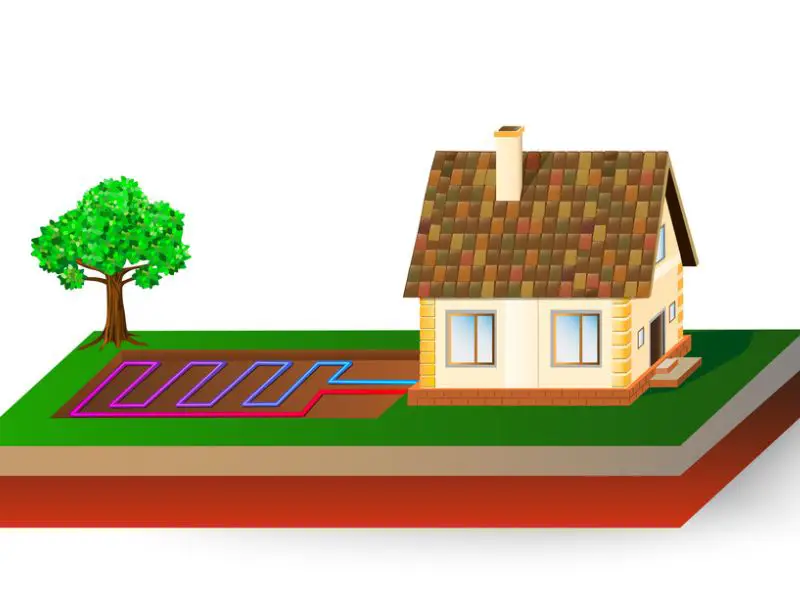
6. Evaporative Air Cooler
If you live in the right setting, an evaporative air cooler is an excellent alternative to central air conditioning.
These cooling devices function by evaporating water and adding humidity to the air. This will have a significant cooling effect when humidity levels fall below 50 percent. In certain instances, you can reduce the temperature in your home by 10 degrees or more.
Pros: This device can effectively cool your home to a large degree. These evaporative air coolers are energy-efficient and will significantly cool your home under the right conditions. In addition to being lightweight and relatively portable, the devices are helpful in various settings. It’s both suitable for home and office.
Cons: The problem with an evaporative cooler is it only works best in a dry environment. If you live in a dry area, this will make your house far cooler. Those who reside in humid climates cannot use these devices effectively. Depending on your geographic region, this might be a fantastic solution or something that won’t function very well.
7. Thermal Curtains
Windows are often the largest source of heat and solar gain in a home.
Thermal curtains are another option that may be used as an alternative to an air conditioner.
Thermal curtains can minimize the heat transported through your windows by up to 24 percent, according to networx.com.
They may provide further energy savings, reduce noise, and block out all light, which is perfect for bedrooms.
Pros: Thermal curtains can be placed in your bedroom window or a bedroom window that’s in direct sunlight. They don’t require any plug-in or special wiring and are very easy to install. All you’ll need is a curtain rod and the thermal curtains.
Cons: Thermal curtains are ineffective in high humidity, such as in Florida and desert regions.
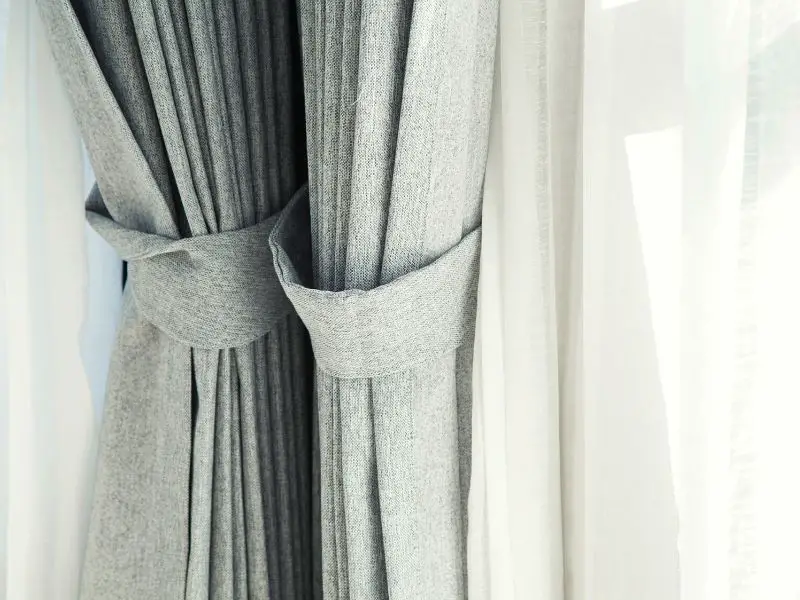
8. Plants
Plants naturally offer alternatives to air conditioning by helping cool a room through the removal of excess humidity.
Not only are they an excellent alternative to air conditioning for improving indoor air quality, but they also play a pivotal role in reducing indoor pollution.
The leaves of plants act as natural filters, absorbing pollutants, dust, and other airborne particles, presenting a green alternative to traditional air conditioning systems. These airborne particles, when unchecked, can cause damaging health effects on humans.
Pros: Plants are a natural way of cooling your home, but they’re not the most effective method of cooling. Compared to other methods that are more energy-efficient and cost-effective, they don’t cool as much as other options. They do, however, add to the beauty and ambiance of your home.
Cons: Plants need sunlight to survive and remain healthy, which may be a problem for someone who lives in a home that doesn’t get enough sunlight.

Check out: Grow Herbs Indoors, Home Office Plants
9. Dehumidifier
Considering alternatives to air conditioning, this method stands out especially if you live in a place with a high level of humidity, and it could save you some money on your energy bill.
Dehumidifiers, one of the effective alternatives to air conditioning, don’t actually cool your space. However, they significantly enhance comfort by reducing the humidity.
We often feel excessively hot in humid conditions because our body struggles to cool itself down.
When faced with a hot and humid environment, our sweat doesn’t evaporate as swiftly, preventing us from cooling down as we usually would. By embracing such alternatives to air conditioning and reducing the humidity, you’ll find that your body feels much cooler and more comfortable.
Pros: Dehumidifiers also help cut down on mold and mildew and protect your furniture from the damage that humidity can cause.
Cons: Dehumidifiers require maintenance. When they stop working, they must be replaced.

10. Wall Vines
Wall vines will generally provide a cooling effect in your home.
Because the materials used to construct your home, such as bricks, absorb and hold heat, the inside of your home heats up.
These vines absorb and release heat from the sun, preventing your walls from heating up – This can save you some money on bills.
Pros: Wall vines are a great way to cool a space. The plants themselves also add beauty to your property.
Cons: This cooling method doesn’t keep your home as cool as an air conditioner or a fan.
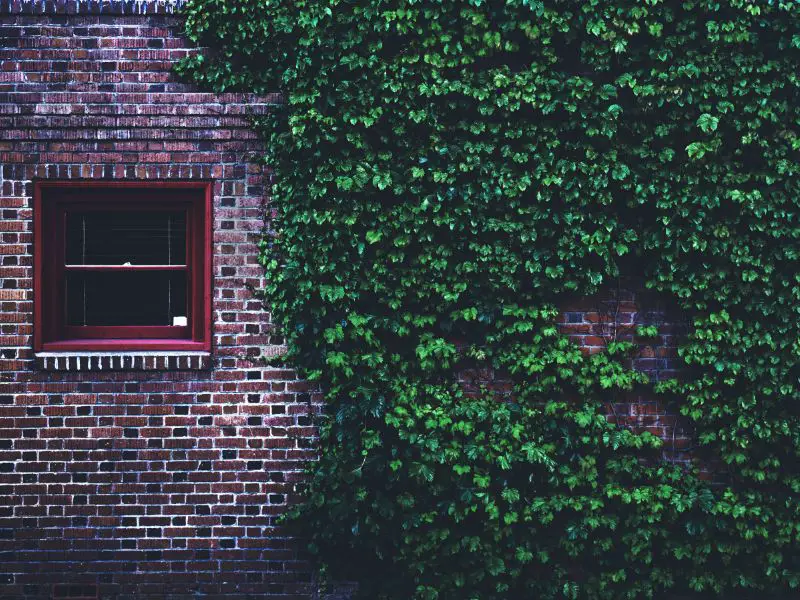
Frequently Asked Questions (FAQs)
Author’s Note
Cooling your home is not always easy, but there are many options that you can use to do so. It’s important to know what will work in your geographical region and be as energy-efficient as possible. These methods might not work for everyone, but they’ll help some people.

